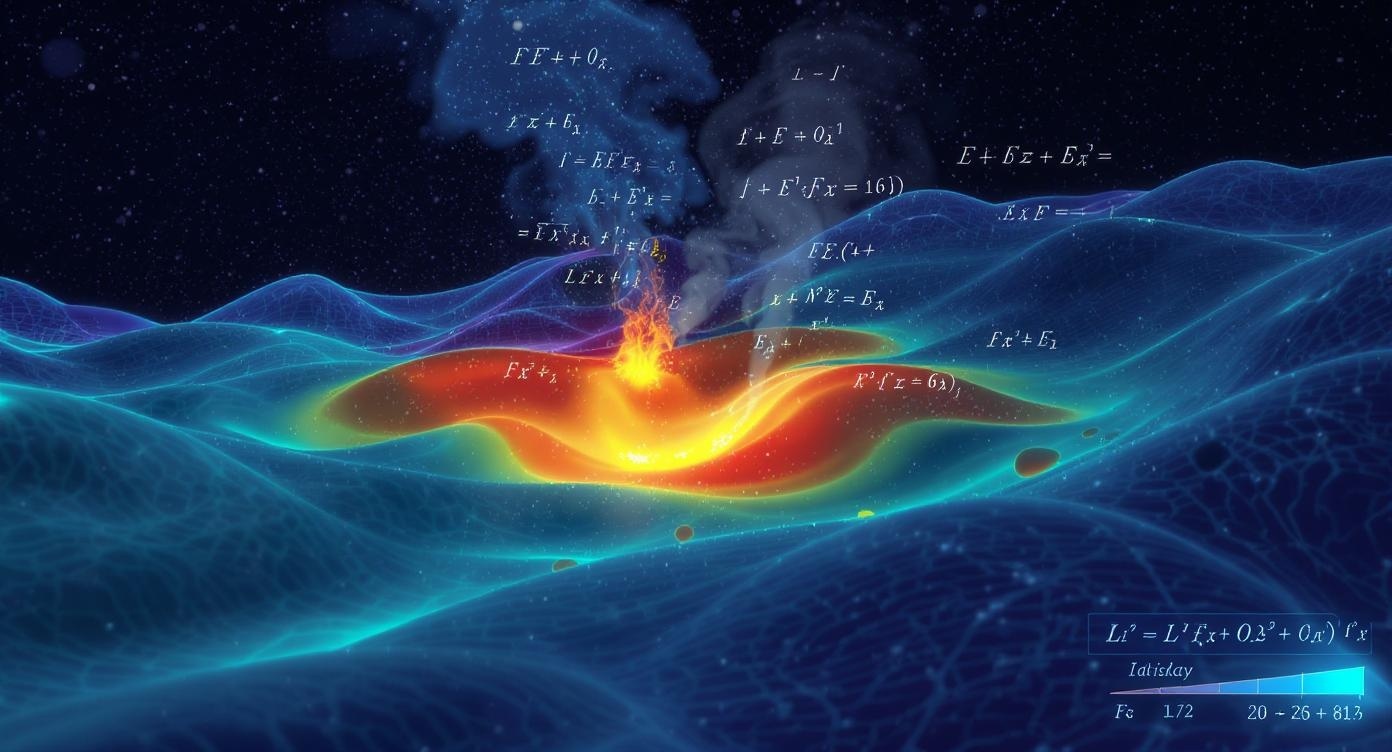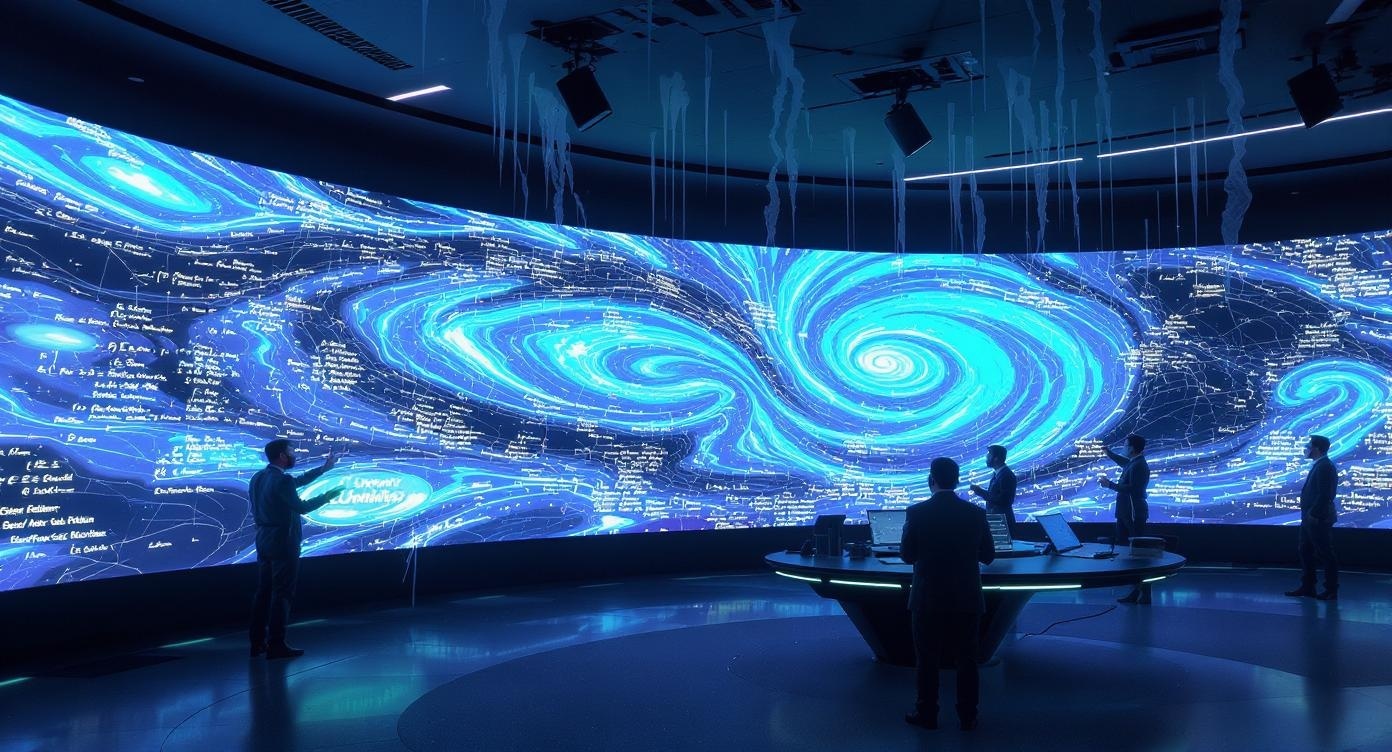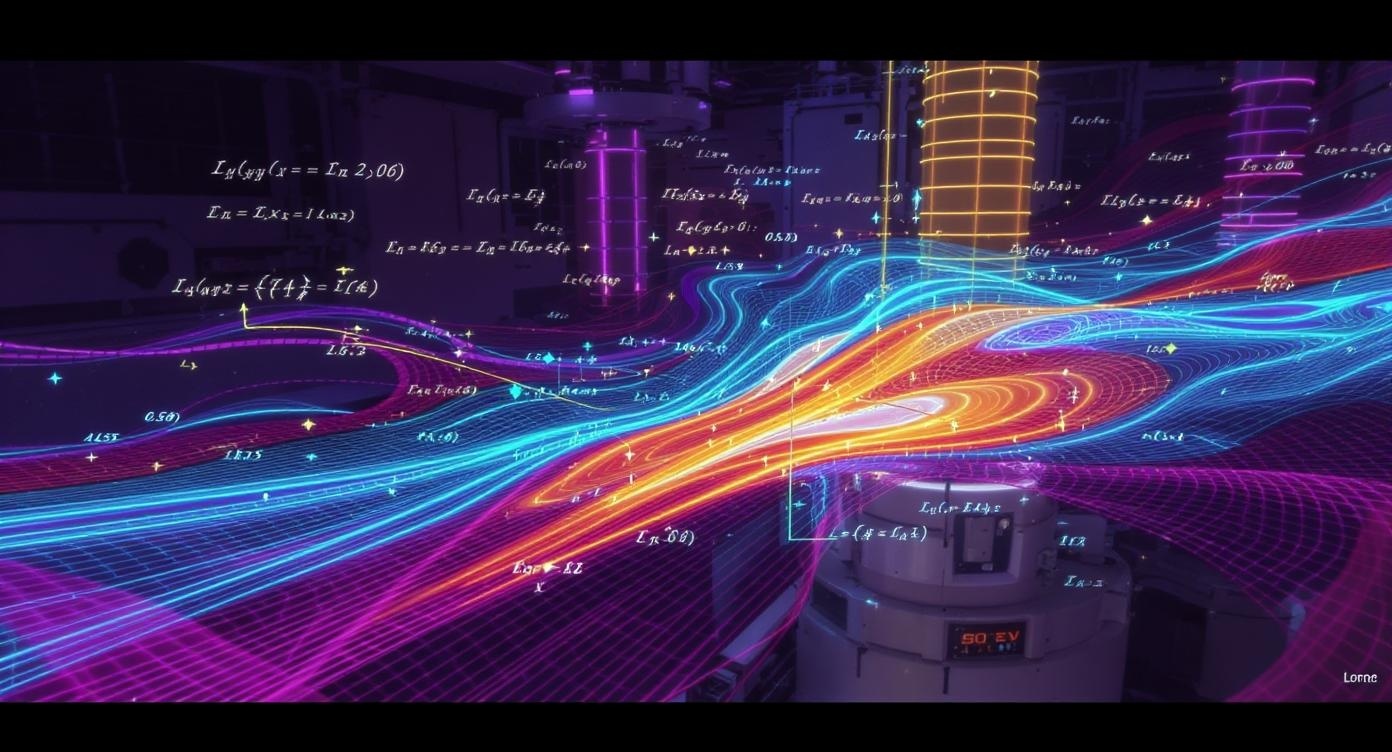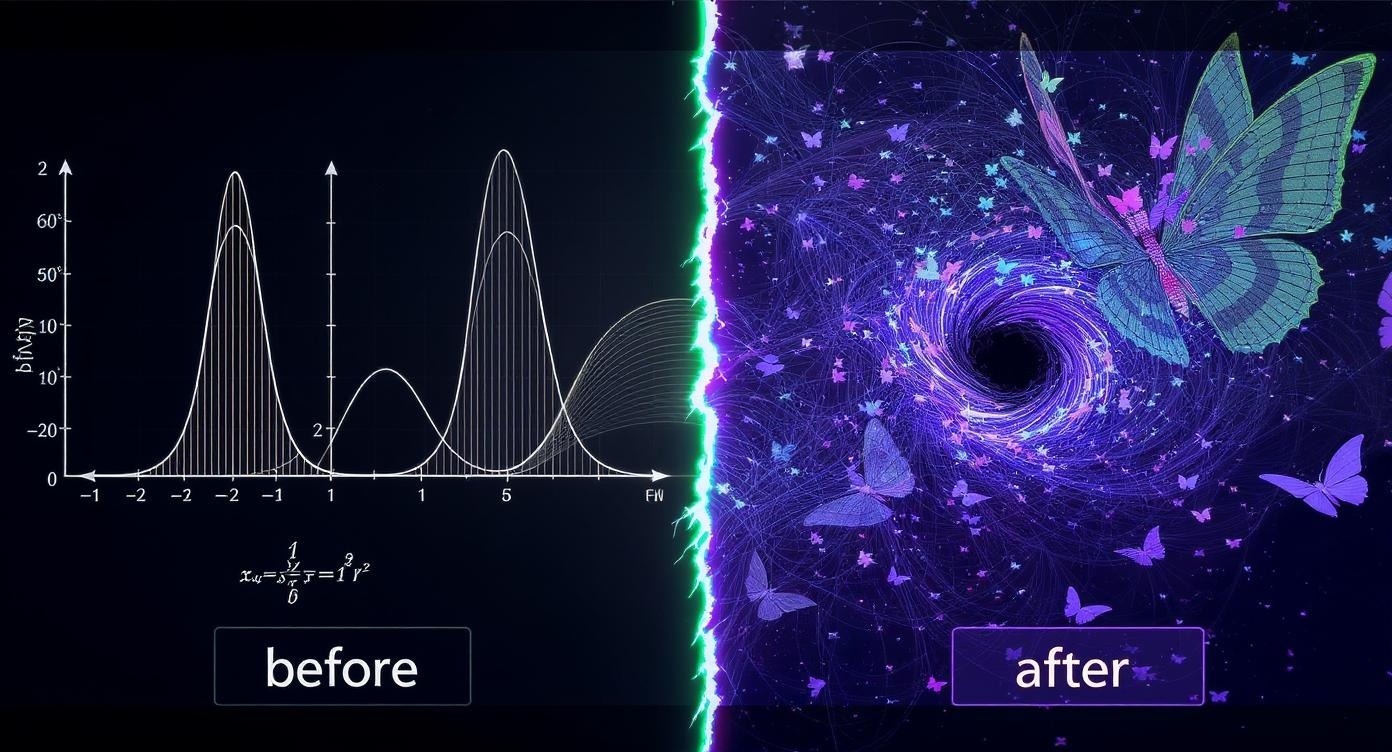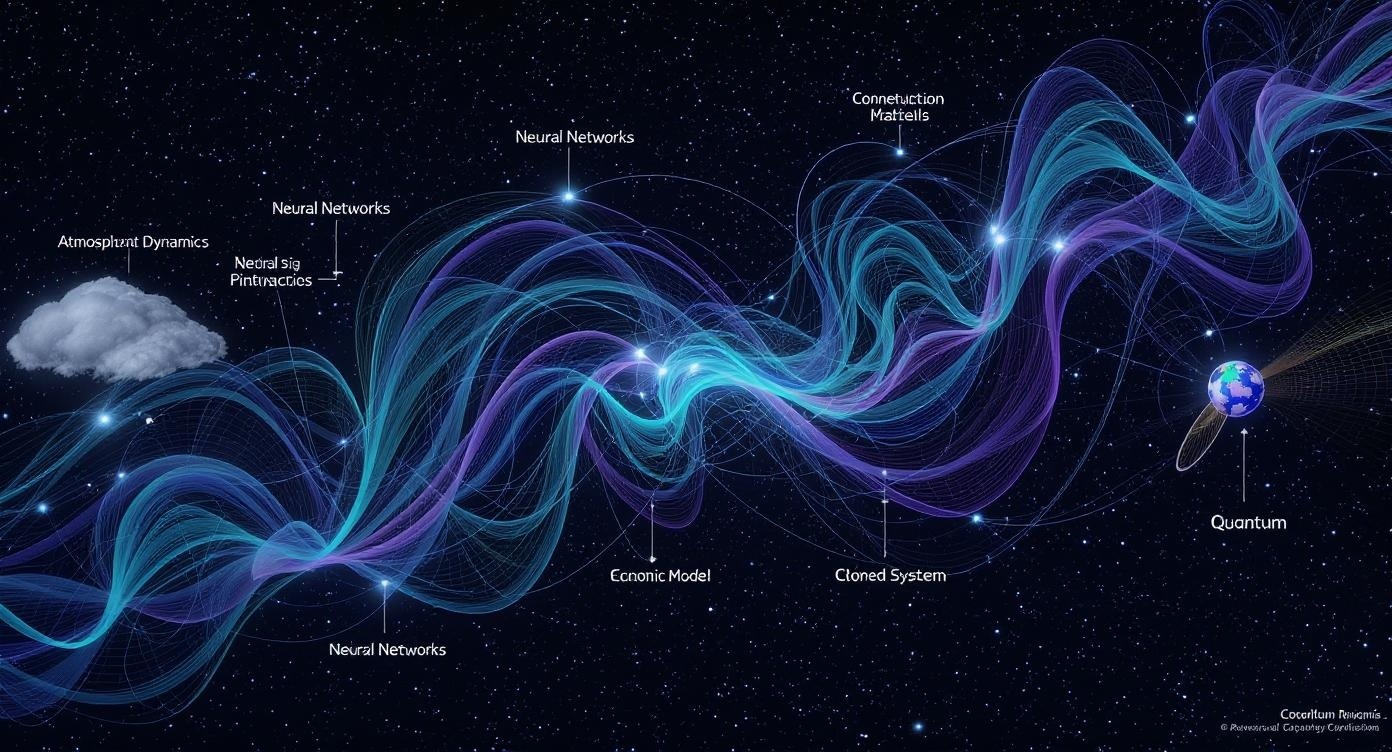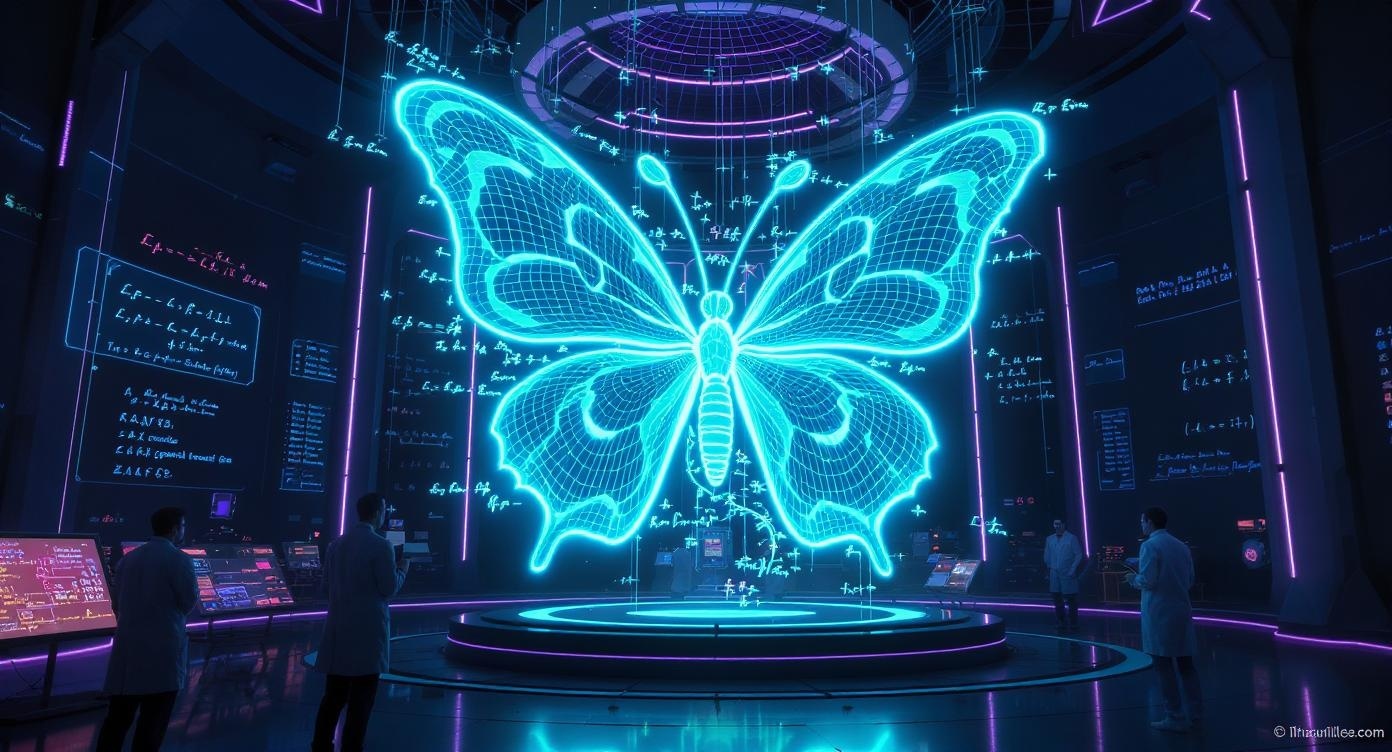Mathematical Foundations
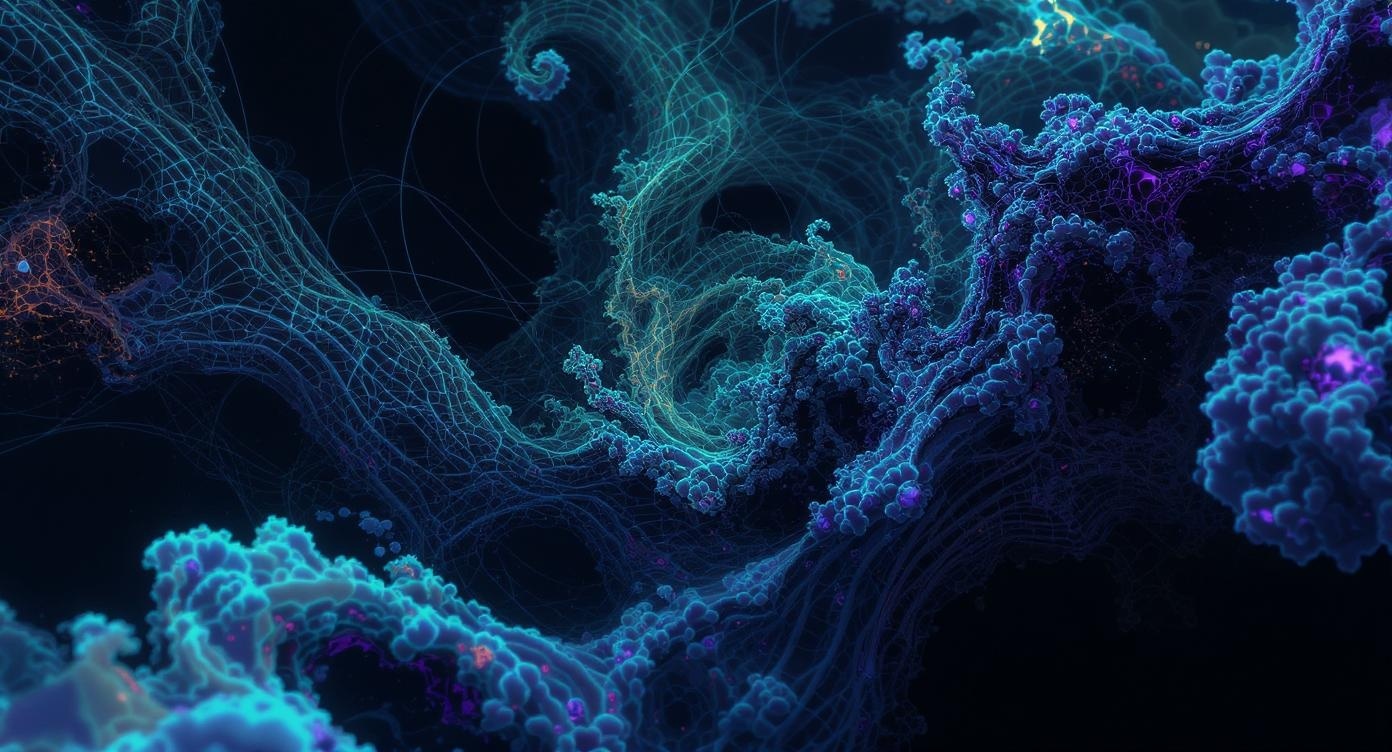
The Strange Attractor
The Lorenz attractor emerges from a deceptively simple system of three coupled differential equations, yet produces infinite complexity through its fractal structure and sensitive dependence on initial conditions.
The Lorenz Equations
where σ = Prandtl number, ρ = Rayleigh number, β = geometric parameter

